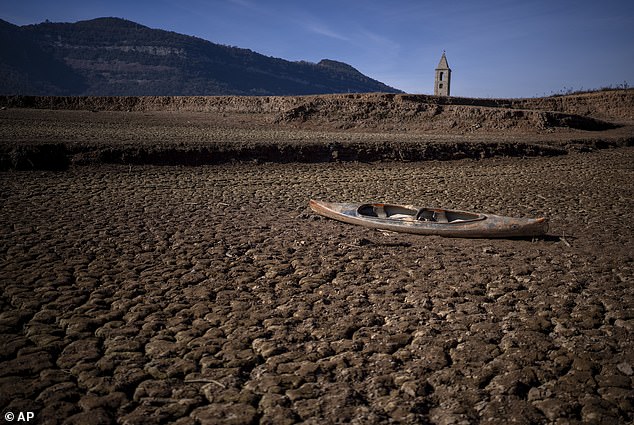
Record-Breaking Heat: Past Decade Confirmed as Hottest with No Climate Respite Forecasted
Climate Crisis Escalates: Earth Nears Critical Thresholds
The past decade has marked the warmest on record, driven by intensifying climate change and extreme weather events. A new World Meteorological Organization (WMO) report warns that temperatures are expected to remain at or near record levels over the next five years, heightening risks of catastrophic heatwaves, floods, droughts, and ice melt.
Record Heat and Tipping Points
In 2024, global temperatures hit 1.55°C above pre-industrial levels—the first full year exceeding the 1.5°C threshold set by the Paris Agreement. While the pact targets a 20-year average below this limit, scientists warn that alarming trends could push Earth into irreversible damage.

The Sau reservoir in Spain during a 2024 drought, when temperatures surpassed the 1.5°C Paris Agreement limit.
The WMO predicts an 80% chance that at least one year between 2025 and 2029 will break 2024’s record. There’s also a 70% likelihood the five-year average will exceed 1.5°C. For the first time, models suggest a 1% chance of a single year reaching 2°C warming—a threshold linked to drastic planetary shifts.
Rising Risks: Ice, Seas, and Weather Extremes
Melting polar ice and warming oceans are accelerating sea-level rise. Antarctic and Arctic sea ice hit record lows, while sea levels reached unprecedented heights in 2024. Coastal cities like San Diego face escalating flood risks.

Antarctic and Arctic sea ice has dwindled to historic lows due to ocean warming.
Extreme weather is becoming more volatile. The UK and Ireland recently saw marine heatwaves 4°C above average, while the Amazon and Arctic face intensified drought and warming. Nearly 20% of major cities, including Jakarta, endure “climate whiplash”—swinging between extreme droughts and floods.

Flooding in Jakarta illustrates “climate whiplash”—extreme weather swings plaguing global cities.
Carbon Emissions and Ocean Impact
Despite climate pledges, CO₂ levels hit 420 ppm in 2024—51% higher than pre-industrial times. Oceans absorbed 90% of excess heat, reaching record temperatures and threatening marine ecosystems.

Coal plants like this one in China continue to drive CO₂ emissions, exacerbating global warming.
Future Projections and Urgency
The Met Office forecasts wetter UK winters and hotter summers. Meanwhile, Arctic temperatures could surge 2.4°C above average, further destabilizing global weather patterns.

Global heat distribution forecast: Dark red areas indicate high chances of above-average temperatures.
Experts stress that current trajectories align with worst-case scenarios. “We’re at the upper end of projections,” says Met Office’s Prof. Adam Scaife. While 2025 may not set new records, the compounding effects of heatwaves, storms, and rising seas underscore the need for urgent emissions cuts.
Key Climate Predictions (2025–2029):
- 80% chance: At least one year hotter than 2024.
- 86% chance: A single year exceeding 1.5°C.
- 70% chance: Five-year average above 1.5°C.
- 1% chance: A year reaching 2°C warming.

Historical and projected global warming trends. Blue shading shows expected rises through 2029.
The climate crisis is no longer a distant threat—it’s reshaping our world now. Without immediate action, the next decade could seal the fate of vulnerable ecosystems and communities worldwide.


